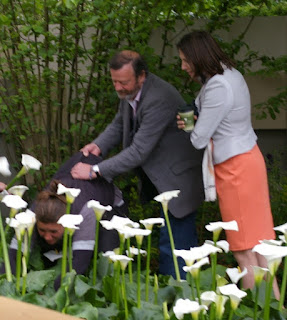 |
| Mt Everest, 30 July 1988, from the ridge above Kala Pattar (c. 18,400') |
Today is the sixtieth anniversary of the ascent of Everest by Edmund Hillary and Tenzing Norgay, a triumph famously announced to the world on the morning of the Queen's coronation only three days later. The failures and tragedies of previous expeditions were redeemed, and the timing of the success added its own regal lustre.
My maternal grandfather, Ambrose Wood, had been interested in Everest from boyhood and had climbed the mountain many times from the comfort of his armchair, possessing a good collection of the early accounts of attempted climbs. I was thus familiar with the Everest story from an early age and as soon as I could, aged 20, I went to Nepal to see the mountain and experience the joys of exploring the Himalaya for myself. And it really was by myself - two months alone and carrying my own kit made it as much a journey of self-exploration as anything else. By then I was also immersed in the writings of the great plant-hunters and my two goals were to see Everest and blue poppies. Both were achieved, with a miraculously cloudless morning permitting spectacular views of the mountain from my highest point, and finding
Meconopsis horridula to be really quite abundant in the upper Khumbu valley.
 |
| Meconopsis horridula, Khumbu, July 1988 |
A few years later I was fortunate to hear both Sir Edmund Hillary and Lord Hunt speak about the 1953 expedition, using original slides; one of the most memorable (for me) being a picture of
Magnolia campbellii in full flower on the march-in, specially mentioned by Hillary for its magnificence. The early spring flora was obviously appreciated by the climbers, and Hunt's book
The Ascent of Everest is full of references to plants and flowers, including the magnolias. On my trek I missed them and most of the rhododendrons, but at higher elevations the alpine flowers were in full bloom and I revelled in them.
 |
| Primula sikkimensis, Khumbu, July 1988. |
With the passing of George Lowe earlier this year the climbing members of the 1953 Everest Expedition are all dead: Tenzing died in 1986, Hunt in 1998 and Hillary in 2009, though Jan Morris, who as
The Times correspondent James Morris achieved the coup of getting the news to London so fast in the days of runners and coded telegrams, is still alive. Theirs was a great story and it is good to remember it today.

































































1.JPG)













